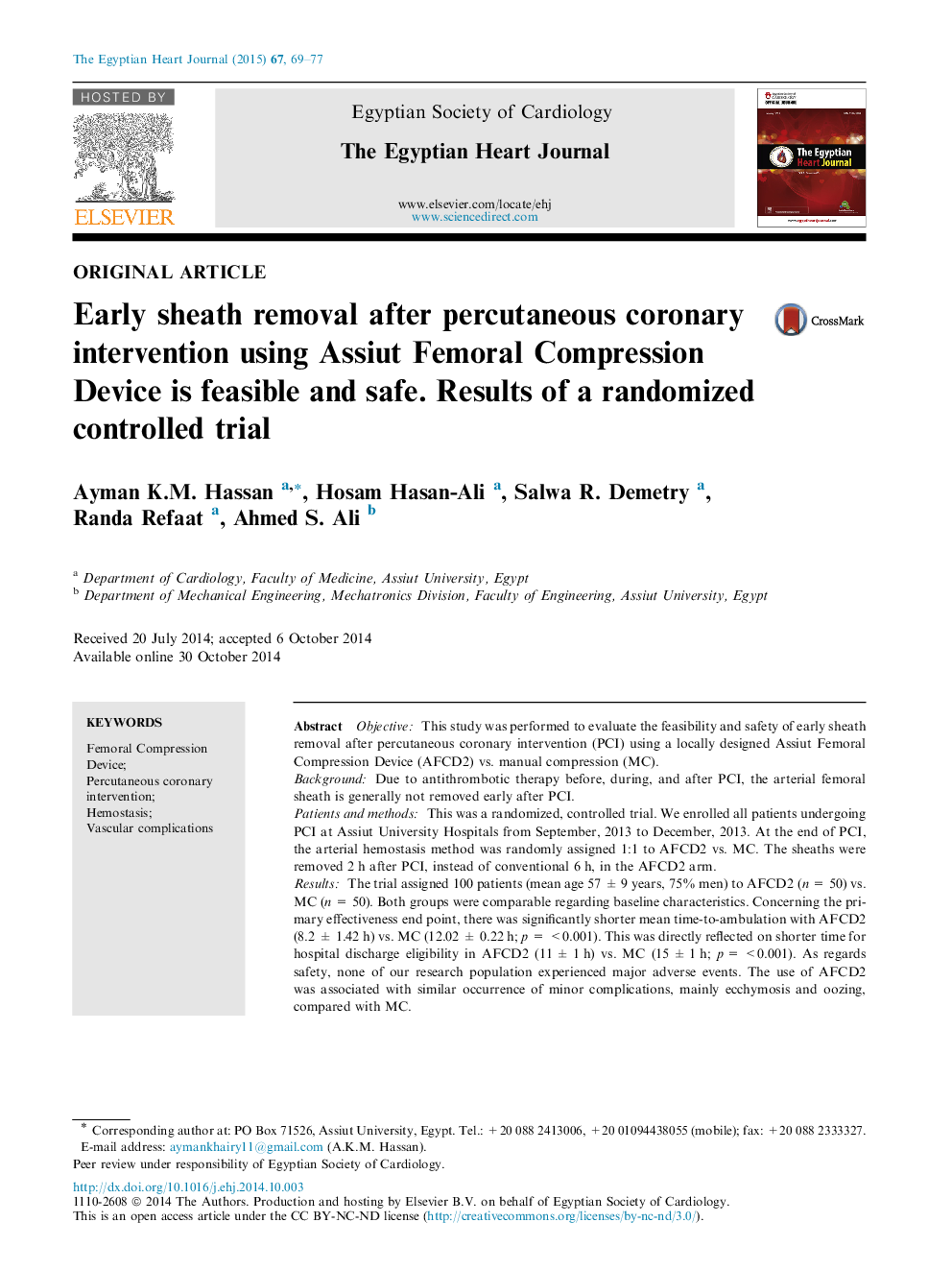| Article ID | Journal | Published Year | Pages | File Type |
|---|---|---|---|---|
| 2910539 | The Egyptian Heart Journal | 2015 | 9 Pages |
ObjectiveThis study was performed to evaluate the feasibility and safety of early sheath removal after percutaneous coronary intervention (PCI) using a locally designed Assiut Femoral Compression Device (AFCD2) vs. manual compression (MC).BackgroundDue to antithrombotic therapy before, during, and after PCI, the arterial femoral sheath is generally not removed early after PCI.Patients and methodsThis was a randomized, controlled trial. We enrolled all patients undergoing PCI at Assiut University Hospitals from September, 2013 to December, 2013. At the end of PCI, the arterial hemostasis method was randomly assigned 1:1 to AFCD2 vs. MC. The sheaths were removed 2 h after PCI, instead of conventional 6 h, in the AFCD2 arm.ResultsThe trial assigned 100 patients (mean age 57 ± 9 years, 75% men) to AFCD2 (n = 50) vs. MC (n = 50). Both groups were comparable regarding baseline characteristics. Concerning the primary effectiveness end point, there was significantly shorter mean time-to-ambulation with AFCD2 (8.2 ± 1.42 h) vs. MC (12.02 ± 0.22 h; p = <0.001). This was directly reflected on shorter time for hospital discharge eligibility in AFCD2 (11 ± 1 h) vs. MC (15 ± 1 h; p = <0.001). As regards safety, none of our research population experienced major adverse events. The use of AFCD2 was associated with similar occurrence of minor complications, mainly ecchymosis and oozing, compared with MC.ConclusionOur results indicate that AFCD2 is a simple and effective alternative to MC for hemostasis following PCI. Early sheath removal 2 h post PCI is feasible, safe, and improves the patient’s comfort.
